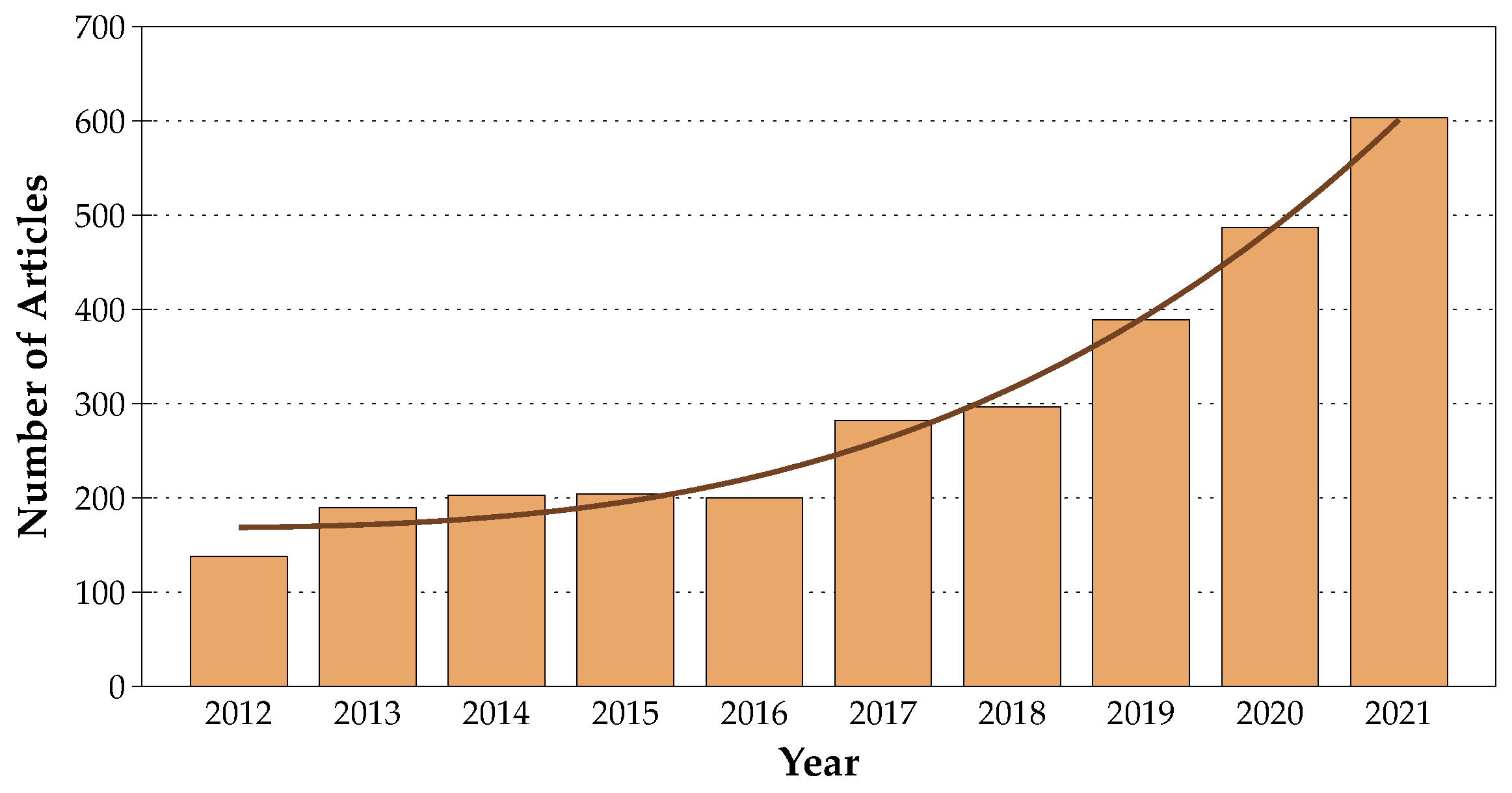It is a great pleasure to assume the role of Editor-in-Chief for the “Fire Risk Assessment and Safety Management in Buildings and Urban Spaces” Section of
Fire (
https://www.mdpi.com/journal/fire/sections/fire_risk_assessment_safety_management_buildings_urban_spaces, 23 May 2022), which is intended to take a front-seat role in the dissemination of world-leading research on this topic. Although the level of awareness of the international community about the need to identify assets at risk and develop more effective and cost-efficient fire risk assessment tools and mitigation strategies is increasing meaningfully [
1], the deadly impact of fires is still very worrying. According to World Bank data [
2], more than 180,000 people die yearly in fires or from burn-related injuries worldwide, 95% of those in low- and middle-income countries where risks rise proportionally to rapid urbanisation. Inadequate urban planning, infrastructure, and construction practices related to fire top the list of factors that contribute the most to the increase in the potential of conflagration, ignition, and the spread of fires in buildings and urban spaces; these aspects, therefore, must be considered with particular attention when discussing the issue of fire safety.
The amount of literature published on this topic has mirrored the awakening of the international community to this problem. This is particularly noticeable in recent years, where, according to Scopus, the number of research articles published yearly has grown strikingly; see
Figure 1. It is worth adding in this context that
Fire Safety Journal (Elsevier),
Fire Technology (Springer), and
Fire and Materials (Wiley) are the three primary sources of publications on this topic, being together responsible for almost 15% of the percentage of research articles published between 2012 and 2021.
Although still very young when compared with the titles mentioned above, Fire (MDPI) Journal has been steadily growing in recognition and influence among the scientific community working in this field. On the eve of receiving its first Impact Factor, it is expected that this influence will be strengthened in the years to come, with the issues on fire risk assessment and safety mitigation being one of the strategic topics for the journal. This new Section aims to contribute to this objective by providing an open-access platform for disseminating high-quality research on the multiple dimensions involved in the assessment, mitigation, and management of fire risk in buildings and urban areas. Topics of potential manuscripts may include but are not limited to the application of empirical methods, statistical and probabilistic models, regression methods, probability distributions, fault and event trees, stochastic models, and machine learning techniques in high-quality research outputs. Contributions addressing the identification, assessment, and treatment of the main drivers of fire risk in buildings and urban spaces, such as the characteristics of buildings and urban space as well as socioeconomic-, demographic-, education-, human- and organisational-related aspects, are strongly encouraged. Outcomes of this section are expected to contribute to strengthening the development and implementation of fire risk prevention, preparedness, and response actions.
The international and interdisciplinary character of this Section will be ensured by the selection of a remarkable group of eminent scientists from around the world to serve as members of its Editorial Board. These colleagues will be instrumental in the establishment and development of this Section by providing advice, guidance, and assistance, as well as by serving as strategic points of contact for researchers in their countries.
High visibility and citation likelihood in open-access publishing [
3], swift publication times–manuscripts are peer-reviewed, and a first decision provided to authors approximately 16.7 days after submission; acceptance to publication is undertaken in 3.5 days (median values for papers published in this journal in the second half of 2021)–and a rigorous peer-review process are some of the benefits of publishing in the “Fire Risk Assessment and Safety Management in Buildings and Urban Spaces” Section of
Fire. Furthermore, all the research published in
Fire benefits from rapid dissemination through different platforms, such as Twitter @Fire_MDPI, Facebook, and LinkedIn, where “just-published papers”, “hot papers”, and “Editors’ Choice” manuscripts are showcased to a broad and interdisciplinary audience.
On behalf of the Editorial Board of the “Fire Risk Assessment and Safety Management in Buildings and Urban Spaces” Section of Fire, it is my absolute pleasure to welcome you to this new forum.





